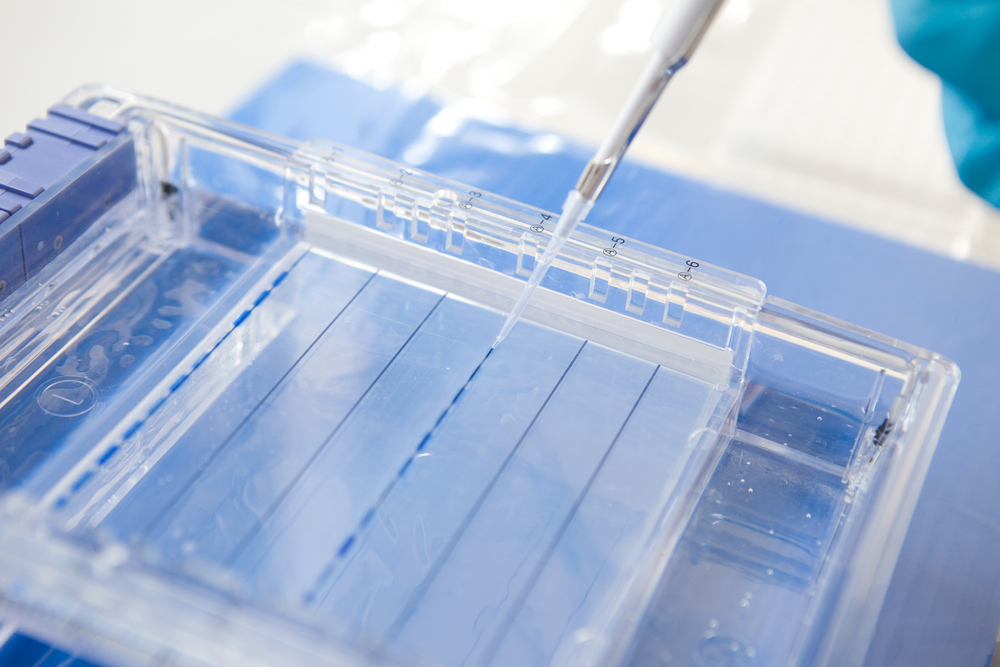What are Some Examples of How Gene Cloning is Used?

Cloning is the process bioscientists use to make exact copies of living things. It is possible to clone genes, cells, tissues, and even whole animals, like the famous cloned beagles cloned from skin cells by scientists at Chungnam National University in South Korea in 2022.
Cloning is also a process that occurs naturally. Bacteria, for instance, create clones of themselves. And even in applied biology, cloning is not always a technologically complicated process. Cutting off a limb of a desirable fruit tree, and grafting it to a rootstock, for example, creates a clone of a tree. But when would you want to clone a gene?
Why Molecular Biologists (and Your Students) Would Want to Clone a Gene
- Molecular biologists sometimes create copies of a target gene for specific downstream applications, such as:
- Sequencing a genome
- Inducing a mutation in a target gene
- Genotyping a tissue sample or a blood sample
- Heterologous expression of a protein
Heterologous expression of a protein refers to encoding DNA or RNA from one species to produce a protein in a different species. For instance, your students may be familiar with using bacteria to produce insulin. Bacteria are also used to produce industrial quantities of enzymes.
The established technique for cloning a gene involves transferring a chosen DNA fragment from one organism to another. This requires using a genetic element that can replicate itself, such as a bacterial plasmid. When molecular biologists use this method today, they typically try isolating long gene sequences or genes they have never studied.
A modern approach uses the polymerase chain reaction (PCR) to amplify a target gene. Modern Biology offers three exercises your students can use to learn and apply this fundamental laboratory technique:
- IND-07: Amplification of a Hemoglobin Gene by PCR
- IND-10: PCR Amplification of a Gene for Ribosomal RNA
- IND-21: Identifying Genomic and Plasmid DNA Sequences in E. coli by Colony PCR
The beauty of PCR over traditional gene cloning is the decreased time required for amplifying the desired gene. However, PCR can only isolate genes with predetermined sequences.
Molecular biologists have to “snip” gene sequences with restriction enzymes.
Your students need to understand that restriction enzymes cut the double helix of DNA by recognizing certain six-nucleotide sequences, for example, GAATTC. These enzymes can isolate genes from both strands of DNA because the two strands of DNA are palindromes. The enzyme that recognizes GAATTC, for example, also recognizes CTTAAG.
Ligase enzymes then “stick” the DNA or RNA sequences in the target organism’s genome.
But how do molecular biologists know where to “stick” the DNA fragments?
DNA fragments can be separated by a process called gel electrophoresis. And, with electrophoresis kits from Modern Biology, your students can master the technique.
You can give your students hands-on experience with cloning
Modern Biology makes it possible for your students to become budding genetic engineers.
Our standard program S11, for instance, allows your students to clone a segment of DNA. The ovine genome contains an unusually highly repeated satellite sequence, short sequences repeated a large number of times. Your students will clone and characterize a satellite sequence by restriction enzyme mapping analysis in this experiment.
Each kit from Modern Biology provides all the chemicals, sterile media, and expendable accessories that 16 pairs of students will need to do DNA electrophoresis, digestion with a restriction nuclease, DNA ligation, bacterial transformation, selection of ampicillin resistance, production of beta-galactosidase, and isolation of plasmids. The only special equipment you will need to have is a microcentrifuge.
Our newly released Standard Program 12 (S12) focuses on gene selection and cloning. Your students will first digest viral DNA with an enzyme. Then they will run electrophoresis to separate it into segments and choose a segment to clone.
Students then isolate the segment from the gel and ligate it into a plasmid. They will use pUC18 as the vector. Next, students feed the plasmid to bacteria through an uptake process to transform the bacteria.
As the bacteria grow, they change colors! Bacterial colonies that take up pure pUC18 should grow dark blue. Bacteria that took up the plasmid with the selected segment to clone will grow white instead.
After the growth phase, your students will analyze their prepared materials and samples. They will double-check to make sure they have completed all the steps correctly. By the time your students have completed both S11 and S12, they will have mastered hands-on competencies to confidently isolate and clone DNA.
The Modern Biology Difference
Every experiment packaged by Modern Biology is designed to teach the scientific method. Students state a hypothesis, write down the procedure they will use in the lab to test it, run their experiment, and write up the results.
Modern Biology helps you transform your lectures about biology into hands-on exercises that help your students become practicing biologists.
Every Modern Biology experiment has the reagents, test materials, and incidental laboratory supplies required for learning. You won’t have to fill out requisitions for individual items for your experiments, and you will never have to cancel a lab for lack of a reagent or materials to test.
Modern Biology offers outstanding learning experiences that can fit within your budget. And we are available during school hours every week to answer your questions about using our products to help your students learn.
Call us at (765) 446-4220 any school day between 9 and 5 Eastern Time, fax us at (765) 446-4225, or email us from our contact page. The home office of Modern Biology is located at 2211 South Street, Lafayette, IN 47904.
 Due to Customs restrictions, we only accept orders from educational institutions within the Continental United States, Alaska or Hawaii.
Due to Customs restrictions, we only accept orders from educational institutions within the Continental United States, Alaska or Hawaii.